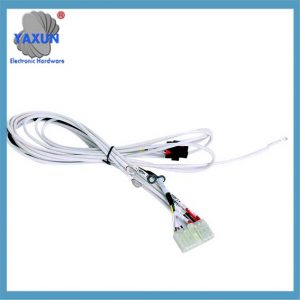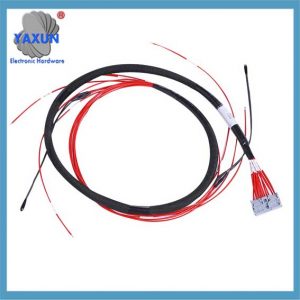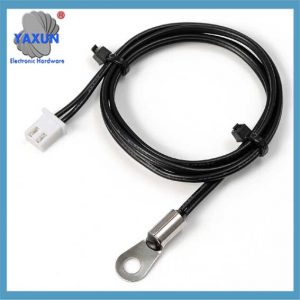What is the biggest enemy of electric vehicle EV batteries? Extreme temperatures.
Lithium-ion batteries perform best in a temperature range of 15-45℃. Temperatures above this temperature can severely damage the battery, while lower temperatures can reduce the output of the battery cells, thereby reducing the range and available power.
The thermal management system is always committed to monitoring or maintaining the internal temperature of the battery, even when not in use (charging). Although any temperature outside the optimal comfort zone will affect the efficiency of the car, the vehicle has an intelligent system that can keep the system within its own comfort zone. I stort sett, when discharging, the battery likes to stay below 45℃. When charging quickly, they like the temperature to be slightly above this temperature, som är, around 55℃, to reduce the internal impedance of the battery and allow electrons to quickly fill the battery.
Temperatures above 45℃
Overheating can damage lithium-ion batteries, and extreme temperatures (such as above 60℃) increase the risk to driver and passenger safety.
Above 45℃, the cells of electric vehicle batteries will degrade rapidly. This requires the system to be controlled by a heat exchanger that can both extract heat from the battery and replenish it if the system is too cold.
What causes EV batteries to overheat?
When batteries are actively charging or discharging, they generate internal heat. Most of this heat moves through metal current collectors and is extracted in bus bars by convection or conducted from the battery to a cold plate under the battery to a coolant, which then leaves the battery pack to dissipate heat through an external heat exchanger. Care must be taken when fast charging because the battery generates heat while charging. Great care must be taken to extract heat and carry it away from the battery because the battery must not exceed its maximum temperature.
Complex models in the battery management system determine the best strategy for controlling the flow of heaters and coolant. Temperature sensors in the battery and throughout the cooling system need to provide real-time data for the model to function properly.
If a battery charges too quickly or overheats during vehicle use, the system must act quickly to reduce the battery temperature immediately. Otherwise, thermally induced battery degradation can initiate the thermal runaway process.
Regardless of the heat source, temperature sensors in EV battery thermal management systems play a vital role in detecting overheating and taking mitigating actions.
Temperatures below 15°C
Thermal management systems are about more than just keeping EV batteries cool.
In colder climates, thermal management of EV battery systems generates heat to keep temperatures above a minimum. They warm the battery before use – whether it’s powering the vehicle, drawing power from a charge, or acting as a power source.
At colder temperatures, the internal dynamics of the battery result in lower charging and discharging rates, which reduces the available battery charge. Low temperatures slow down the chemical and physical reactions that make EV batteries work efficiently. Without intervention, this increases impedance (resulting in longer charging times) and reduces capacity (resulting in reduced range).
When the battery is extremely cold, forcing too much charge into the battery causes the lithium to form dendrites. These can pierce the separator between the anode and cathode, causing an internal short circuit in the battery. Därför, the charge rate is controlled in extremely cold climates to carefully heat the battery, increasing the charge rate only when the battery is above the minimum operating temperature.
Internal combustion engine (ICE) vehicles appear to have an advantage in cold weather, generating a lot of waste heat to keep the vehicle warm in cold temperatures. Without this waste heat, EVs would have to divert energy from the battery to support heating and cooling.
Dock, thanks to the efficient design of heat pump systems in EV applications, as well as heated/cooled seats and other technologies, heating and cooling is only done when and where it is needed. They have proven themselves to be better vehicles for getting stuck in a snowstorm or summer traffic jam than their ICE ancestors.
While the BMS continuously monitors the voltage and current going in and out of the battery pack, it also controls systems external to the pack to manage temperature, such as the refrigerant and coolant loops.
To manage these systems, the BMS uses coolant temperature sensors inside and outside the pack cooling plate, as well as cell and busbar temperatures inside the pack. This also extends to monitoring coolant temperature at the external heat exchanger, as well as pressure and temperature at key points in the expansion valve and refrigerant loop. This high level of monitoring of temperature sensors provides critical data to control the precise amount of heating and cooling from these systems to optimize battery pack performance while minimizing parasitic energy losses running pumps, compressors, and auxiliary heating and cooling components.
 English
English العربية
العربية Български
Български 粤语
粤语 中文(简体)
中文(简体) 中文(漢字)
中文(漢字) Nederlands
Nederlands Suomi
Suomi Français
Français Deutsch
Deutsch Ελληνικά
Ελληνικά Magyar
Magyar Italiano
Italiano 日本語
日本語 한국어
한국어 Polski
Polski Português
Português Română
Română Русский
Русский Slovenščina
Slovenščina Español
Español Svenska
Svenska ภาษาไทย
ภาษาไทย Türkçe
Türkçe Tiếng Việt
Tiếng Việt



